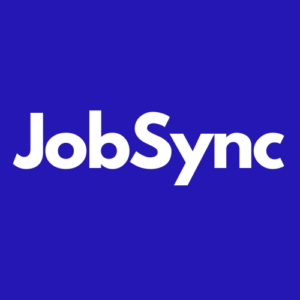
2022 flew by. We saw some big changes in the workforce and things do not seem to be slowing down. In our final roundtable of the year, Brian Fink joined us as we talked about trends, predictions, and the major markets being affected by these changes. Combining Brian’s insights with some of our own, the following is a good deep dive into what’s about to come as we walk into 2023.
As always we fired up our roundtable with our mics and cameras on, and Brian tried to cover as much as he could take us through in an hour. Check out the full replay here.
There Are Multiple Job Markets Operating Somewhat Independently
We kicked off with a fairly commonly held belief right now – we are in the midst of a tale of two job markets: layoffs and shortages. Big tech driving headlines of layoff after layoff, while the JOLTS report keeps reporting more job openings than people available to do the work.
There are actually 3 different job markets and they are all equally, but differently, important.
Per Brian, the three job markets to watch are skilled trades, big tech, and entrepreneurs. Let’s break it down:
1. Skilled Trades
The story of the skilled workers, the deskless workers, the feet on the ground workers, is going to continue to be more of the same story we have been hearing for years. Wage increases will cause workers to continue to job-hop for another $1 or $2 an hour. Pay transparency will accelerate this, at least temporarily, while the market looks for wage (and inflation) stability.
This market continues to experience high retirement (and some re-entrants of previously retired people) and high burnout. Many of the roles are physically demanding or worse have a high touch with the American consumer – neither of which new workers are scrambling for.
What we didn’t talk about is the declining numbers applying for and graduating from skilled trade schools while college acceptance rates continue to get more competitive. A number of things are compounding this issue: the declining overall workforce, the elimination of shop class in high school, and the social pressures to head to college and away from the trades.
2. Big Tech
The back half of 2022 gave way to the rise of systemic layoffs at many of the biggest players in the tech space. Companies either over-hired thinking they needed to build bench strength as a result of the continual labor shortages, ongoing VISA issues, and the massive shift to online demand (and therefore the need for more developers), resulting in companies now having unnecessarily large software development organizations.
As companies are fighting higher interest rates, inflation, pay transparency (and therefore having to fund the pay gap), the increased costs are adding up, especially when the projects aren’t delivering on revenue. The result is layoffs at the mid to top end of the desk worker.
What is happening at Amazon, especially with Amazon Alexa vs AWS is a microcosm of a much bigger collision of big tech and new tech. Venture Capital has been pouring money into new tech for the past 2+ years, both good and bad investments. Those companies have been gobbling up the tech talent, leading to today – venture-backed tech-enabled companies that are over their skis in costs, without a clear path to revenue.
This has a ripple effect across the entire economy, with other companies pulling back their spending practices and
2023 Prediction 2: We aren’t done – companies, especially tech companies are going to keep taking a hard look at costs vs revenue, and where the math doesn’t make sense, layoffs will continue.
3. Entrepreneurs
Some will land new gigs, whereas others will get bitten by the entrepreneurial bug, and in 18-24 months we will have an explosion of new technologies hitting the market – some solving tech problems similar to the companies that those technologies were released from, some new and innovative tech, and some solving the candidate experience problem itself.
This is an example of a larger market trend – the move to entrepreneurship. Fueled by gig companies, MLM organizations, contractor sites like Upwork, and the ‘great realization’ that remote work is possible at scale.
The wild card here is the venture capital market – money has gotten far more expensive over the last year, and the economic indicators suggest that is a longer-term trend – so the entrepreneurs who will get funding will be the ones that hit the nail on the head with product market fit and team to build the next generations of technology.
2023 Prediction 3: The number of new companies is going to rise exponentially and a meteoric rise in new tech is 18 months away. From AI to HR, all aspects of technology are about to see new entrants.
Recruiters’ jobs are going to get harder, not easier.
While the new reels focus on the tech talent flooding the market, there is a secondary causality to this wave of layoffs – recruiters. Not just recruiters – recruitment support roles as well, primarily sourcers, employment branding, recruitment marketing, and pre-boarding professionals have also found themselves out of jobs. Some will shift and join or start staffing and recruitment firms, others might career shift into marketing, sales, and training roles, or transition back into traditional recruiting roles – but the bigger story here is actually the recruiters who remain. Optimized with employment branding, recruitment marketing, and sourcing teams, recruiters could focus on their primary job – recruiting. With this belt tightening, many recruiters are about to find themselves sliding back into wearing 10 hats, and being significantly less productive. Recruiters will scramble to stay on top of everything with a major casualty: the candidate experience.
2023 Prediction 4: Companies are going to reduce or eliminate many of the roles that have helped recruiting teams optimize both process and experience. Recruiters are going to find themselves running full desk services with more demands and less resources.
2022 offered a unique opportunity to focus on the importance of candidate experience, and many companies leaned in, recognizing the candidate experience is more than just limiting the number of clicks to complete an application, but really the anchor of candidate experience distills down to every touch point, and every moment waiting, the candidate’s own experiences and expectations and how that aligns with a company’s ability to deliver on those expectations.
Click here for part 2, where we dive into the next five predictions.


